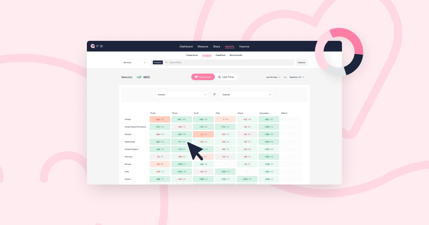Service level agreements (SLAs) are no longer what organizations and their IT service providers need, with employee experience a significant IT service management (ITSM) trend for the 2020s and a key driver for CIOs to prove the value of IT departments. Experience level agreements (XLAs) are designed to measure outcomes and experiences, leading to better service, increased happiness and productivity, and replacing the reliance on outdated SLA metrics.
Find out what XLAs are here.
The key benefits of XLAs and why you need to use them in your IT services are explained in the following five sections:
- XLAs measure the business value of the service desk
- XLA measurement increases cooperation
- Create a more motivated service desk team
- Drive business value
- Create a moving target – in a positive way.
1 - XLAs measure the business value of the service desk
XLAs measure what matters, not what happens at the service desk. They thus remove one of the most common pain points of ITSM – being seen as a relevant function from a business perspective.
For example, instead of saying, “We have solved 10,000 tickets this month,” the question, “Why did we have 10,000 tickets this month?” should be asked. This example shows the transition from SLAs to XLAs. Also, it suggests that the IT service provider or owner should focus on the reasons behind the tickets and what part of the employee experience needs improving to reduce the number of tickets.
Fixing the issues or pain points that end-users create IT support tickets about leads to a higher number of end-users reporting their happiness with the service they received or their increase in efficiency compared to last month. This is where the business will begin to listen and realize the change and impact that IT can have on the business value.
Fewer tickets, more efficient employees, better service experience.
2 - XLA measurement increases cooperation
When your organization has thousands of end-user feedback responses and comments, you have data you can trust. End-users honestly tell the IT service desk and service management teams what works and what doesn’t. This means that everyone can focus on the right issues and not give priority to whoever is shouting the loudest.
Sharing data and being transparent with this data is the ultimate key to building cooperation. With XLAs, your organization measures the experiences your end-users already have and works in cooperation with your IT service desk and other ITSM areas to create a better experience for the end-users.
3 - Create a more motivated service desk team
This might not be front of mind when considering the benefits of experience management, but for IT staff, it’s much more motivating to be measured on how you have helped people rather than being measured on how many tickets you have closed.
Instead of IT service desk personnel being measured on how many tickets they can close per hour, which could lead to them rushing cases or possibly not solving issues and not delivering a great service experience to the end-user, IT service desk personnel now have the opportunity to provide a great experience, find the heart of the end-users issue, and be measured on how they have improved someone’s day.
Let’s face it: IT service desk personnel would rather get good feedback on how they have helped people each day rather than being told to close more cases and be quicker with their service.
This short animation illustrates how XLAs can benefit both the IT service desk and end-users.
4 - Drive business value
When understanding end-users better, IT organizations can create real value for their business. IT organizations can provide a better experience to their customers, who no longer need to work overtime due to IT issues making it impossible to work during “office hours.” The business value of service management is helping employees do their jobs and focusing on the things that matter to the business.
By implementing HappySignals experience measurement, CIOs can begin to measure the experience employees are having and then justify which areas need to retain focus and be developed. A good example of this is our customer Reckitt Benckiser. Its CIO was receiving very negative comments about IT from management, including how IT was not functioning properly. After implementing HappySignals, they could show that IT was doing well, but they could also see the improvement areas that IT needed to focus on. This made a big difference because the CIO didn’t have to rely on their gut feeling on what was possibly wrong in IT and could show the value that IT, in fact, brings.
In short – better business outcomes are delivered through experience management.
5 - Create a moving target – in a positive way
We believe it’s not enough anymore to set performance targets that last for years, and XLA targets should change after about six months. And organizations should always be able to continue to develop their services. For us, agreements should be ways of working rather than targets with sanctions. The best results are always reached through cooperation.
Many of our customers are already using XLAs. For example, Orbis Partnership let go of its “so what metrics” and employed XLAs instead. If you'd like to learn more about how to use XLAs in your organization, please take a look at our Practical Guide to XLAs.



